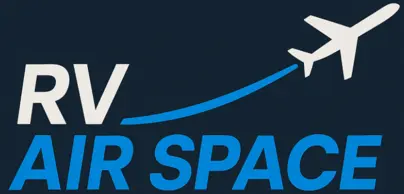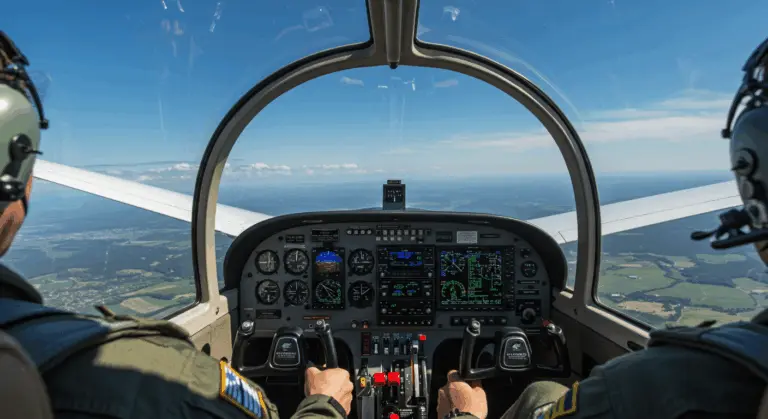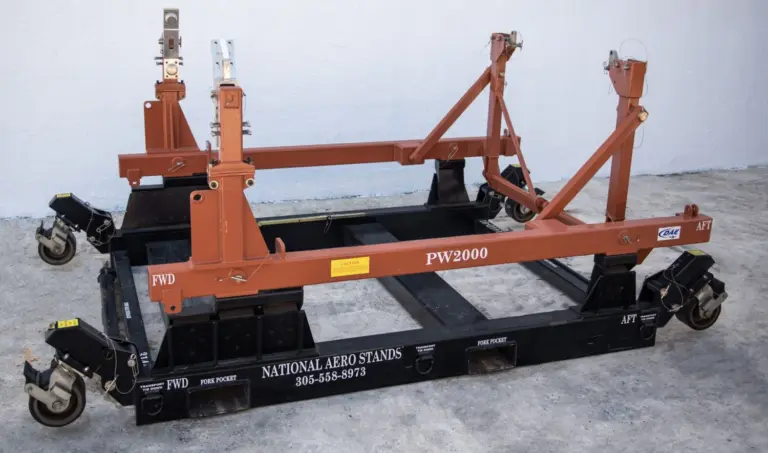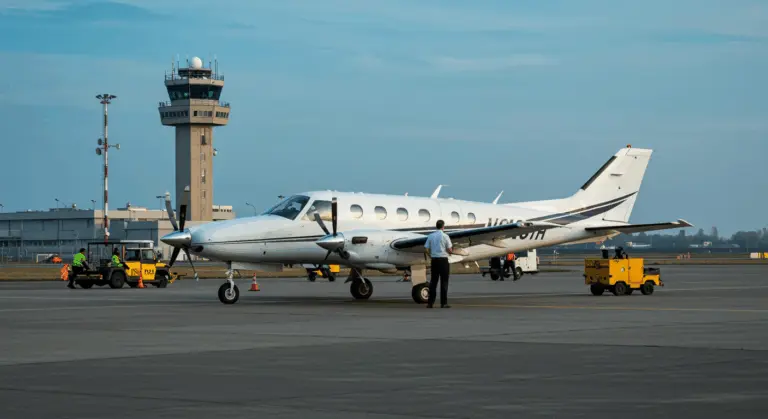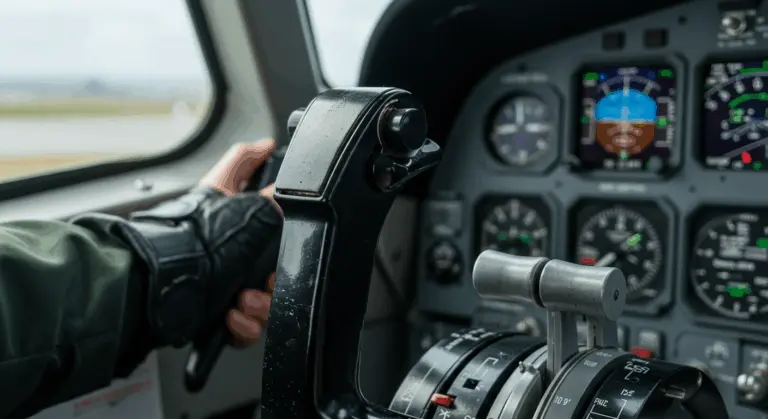Understanding IFR Acronyms – A Comprehensive Guide
STAR – Standard Terminal Arrival Route
A STAR (Standard Terminal Arrival Route) is a predetermined IFR arrival path that guides aircraft from the en route phase of flight to an approach at a specific airport. These published procedures simplify ATC communications while helping pilots transition from high-altitude cruise to the approach phase. Stars typically originate at a navigation fix and terminate at another fix where an instrument approach begins, connecting the en route structure with the terminal environment.
STAR charts present essential information, including waypoints, altitude and speed restrictions, and navigation guidance. They may also feature non-mandatory arrival holds—pilots should enter these only when specifically directed by ATC. Proper execution of Stars ensures efficient traffic flow and separation in busy terminal areas.
RAIL – Receiver Autonomous Integrity Monitoring
RAIL (Receiver Autonomous Integrity Monitoring) is a critical technology in modern IFR operations that continuously verifies the reliability and accuracy of GPS signals in real-time. The system uses mathematical algorithms within the GPS receiver to detect inconsistencies in satellite signals, enabling it to monitor its own integrity without requiring external verification.
During GPS-dependent IFR procedures, RAIL conducts continuous checks to ensure position accuracy meets required navigation performance standards. The system requires a minimum of five satellites in view (four for navigation plus one for integrity monitoring) to function properly. Should insufficient satellites become available or signal quality deteriorate below acceptable thresholds, the GPS receiver alerts the pilot that RAIL is unavailable—a clear indication that GPS should not be relied upon for critical navigation decisions.
For pilots planning GPS-based approaches, conducting a RAIL prediction check is an essential preflight task, particularly when flying to airports with limited navigation alternatives.
Essential Acronyms for IFR Flight Planning
Thorough flight planning is the foundation of safe IFR operations, and pilots rely on several key acronyms and memory aids to ensure thorough preparation and in-flight decision-making. These frameworks help organize the complex information requirements of instrument flying while providing systematic approaches to risk management throughout all flight phases.
Key decision-making tools include:
-
The 5 T’s (Time, Turn, Throttle, Twist, Talk): Used at waypoints to maintain situational awareness.
-
The 5 P’s (Plan, Plane, Pilot, Passengers, Programming): A comprehensive check for evaluating changing flight conditions.
-
The DECIDE Model (Detect, Estimate, Choose, Identify, Do, Evaluate): A structured framework for in-flight problem-solving.
These acronyms serve as mental frameworks, helping IFR pilots maintain organization throughout pre-flight planning and in-flight operations. Using these systematic approaches, pilots can more effectively navigate the complexities of instrument flying while keeping critical safety considerations at the forefront. Understanding and applying these acronyms is essential for any pilot operating under Instrument Flight Rules, where visual references may be limited or unavailable.
KRAFT – Preflight Planning Checklist
KRAFT is an essential preflight checklist, ensuring comprehensive consideration of all essential elements before launching an IFR flight:
-
NTams: Review notices affecting the route or destination.
-
Weither: Assess current conditions, forecasts, and potential hazards.
-
Know ATC Delays: Plan for potential traffic congestion.
-
Rrunway Lengths: Verify adequacy for the aircraft’s performance.
-
Aalternates: Identify and assess contingency airports.
-
Ffuel Requirements: Calculate fuel for the route, holds, and reserves.
-
Ttakeoff/Landing Distances: Compute performance data based on current conditions.
GRAB CARD D – IFR Equipment Requirements
GRAB CARD D is an acronym for the minimum equipment required for IFR flight:
-
Ggenerator/Alternator
-
Radios (communication and navigation)
-
Aaltimeter (sensitive)
-
Ball (slip-skid indicator)
-
Clock (with seconds display)
-
Aattitude Indicator
-
Rate-of-Turn Indicator
-
Ddirectional Gyro (heading indicator)
-
DME (required above FL240 if using VOR navigation)
This checklist is essential during preflight inspections. IFR operations demand significantly higher equipment reliability than VFR flights, given the critical reliance on instruments when visibility becomes compromised. Following GRAB CARD D ensures the aircraft meets regulatory standards for safety and compliance.
MARVELOUS VFR C500 – Mandatory Reports
MARVELOUS VFR C500 is a comprehensive memory aid for mandatory, unprompted reports that pilots must communicate to ATC. These reports are crucial for maintaining situational awareness throughout the air traffic system—particularly vital in non-radar environments.
The acronym covers the following situations:
-
Missued approach
-
Aairspeed change (±10 knots or 5% of filed TAS)
-
Rreaching a holding fix (report time and altitude)
-
Vacting a previously assigned altitude
-
ETA change of more than 3 minutes
-
Lhaving a holding fix
-
Ouser marker (or Final Approach Fix inbound)
-
Uforecast weather conditions
-
Ssafety of flight issues
-
VFR-on-top altitude change
-
Ffinal approach fix inbound
-
Rradio or navigation equipment failure
-
Ccompulsory reporting point
-
500 FPM climb/descent is unable to be maintained
CRAFT – IFR Clearance Components
CRAFT is a fundamental memory aid that enables pilots to systematically process and record IFR clearance information. This acronym breaks down complex clearance instructions into five digestible components:
-
C clearance limit – The farthest point to which the clearance is valid, typically the destination airport
-
R out – The specific path to be flown, including airways, fixes, and departure/arrival procedures
-
A altitude – The initial altitude or flight level to maintain
-
F frequency – The radio frequency to contact ATC after departure
-
T transponder – The four-digit code to set in the aircraft’s transponder
Using CRAFT’s framework, pilots improve their ability to accurately capture, comprehend, and execute ATC instructions. This methodical approach minimizes communication errors while enhancing situational awareness, freeing pilots to concentrate on other critical flight operations.
Consider how a typical IFR clearance breaks down: Clearance limit to Orlando Executive Airport; Route via the Miami Five Departure, then direct to VOR waypoints; Altitude of 8,000 feet initially; Frequency 124.8 for departure control; and Transponder code 4532. Through CRAFT, pilots can swiftly document these elements in a standardized format that remains easily accessible throughout the entire flight.
The CRAFT method has become standard practice precisely because it establishes a consistent framework for processing clearances—proving especially invaluable for developing instrument pilots.
Decision-Making and Safety Acronyms in IFR
Instrument flight operations require structured approaches to decision-making and risk management. Two pivotal acronyms—DECIDE and PAVE—form the backbone of IFR safety protocols. These frameworks provide pilots with systematic methods to evaluate situations, manage risks, and make sound judgments when flying under instrument conditions.
The DECIDE model offers a complete decision-making framework designed for aviation scenarios. This six-step process navigates pilots through complex situations by deconstructing them into manageable components:
-
D detect – Recognize that a change has occurred requiring attention
-
E estimate – Evaluate the significance of the change and determine if action is needed
-
C house – Select the most desirable outcome for the situation
-
I identify – Determine actions that could successfully control the change
-
D o – Implement the necessary actions
-
E valuate – Assess the effectiveness of the actions and modify as needed
This methodical approach is especially valuable during IFR operations, where limited visibility demands rapid decisions based on instrument readings rather than visual references. Using the DECIDE model, pilots can preserve logical thinking even when confronting high-stress conditions.
Complementing DECIDE, the PAVE checklist works as both a pre-flight and in-flight risk assessment instrument. PAVE examines four critical risk categories:
-
P lot – Personal factors including experience, currency, fatigue, and health
-
A aircraft – Aircraft capabilities, limitations, equipment status, and performance
-
enV** content – Weather conditions, terrain, airspace restrictions, and facilities
-
E external pressures – Schedule demands, passenger expectations, and other pressures that might influence decision-making
Unlike MARVELOUS VFR C500, both DECIDE and PAVE concentrate on the cognitive dimensions of flight safety. They establish frameworks for internal processing rather than external communication protocols. Together, these acronyms create a complete risk management approach that empowers instrument pilots to navigate IFR operations’ complex decision landscape both safely and effectively.
DECIDE – Decision-Making Model
Real-world application of the DECIDE model is crucial for effective IFR risk management.
Instrument conditions present pilots with unique challenges that demand structured decision-making processes. Consider encountering unexpected weather deterioration during an approach—the DECIDE framework guides pilots through systematic evaluation:
-
Detect: Recognize deteriorating conditions on approach instruments
-
Estimate: Assess if current minimums can be maintained safely
-
Choose: Determine whether to continue or execute a missed approach
-
Identify: Consider alternate airports, holding patterns, or other options
-
Do: Implement the selected course of action with precise control inputs
-
Evaluate: Monitor instruments to confirm the effectiveness of actions taken
DECIDE’s cyclical nature distinguishes it from other decision models. The evaluation step frequently circles back to detecting new factors, creating a continuous loop of situational assessment that is especially valuable during complex IFR operations. This iterative process helps pilots maintain situational awareness when visual references are limited or unavailable.
Training with the DECIDE model improves pilot performance during emergencies. This structured approach prevents cognitive overload while combating continuation bias—that dangerous tendency to persist with the original plan despite evolving conditions.
For instrument pilots, incorporating DECIDE into routine flight operations develops mental patterns that become invaluable when high-stress situations arise. Regular practice of this framework builds the mental muscle memory essential for effective application during critical events.
PAVE – Risk Management Checklist
The PAVE acronym is a comprehensive pre-flight risk assessment framework encompassing four critical categories:
-
Plot: Assesses personal readiness, including fatigue, illness, stress, and IFR currency.
-
Aaircraft: Evaluates airworthiness, equipment, and suitability for the planned IFR flight.
-
V (environment): Considers weather, terrain, airspace, and other environmental factors.
-
Eexternal Pressures: Identifies non-essential pressures like schedules or passenger expectations that could influence decisions.
PAVE’s true value emerges from its holistic approach. Consider this: even a proficient pilot (P) flying a well-maintained aircraft (A) faces elevated risk when marginal weather (V) combines with external pressure to arrive on schedule (E).
Seasoned pilots use PAVE to construct layered defenses against poor decision-making. Through risk quantification across each category, they establish personal minimums that exceed regulatory requirements—a powerful strategy for countering optimism bias during critical go/no-go decisions.
